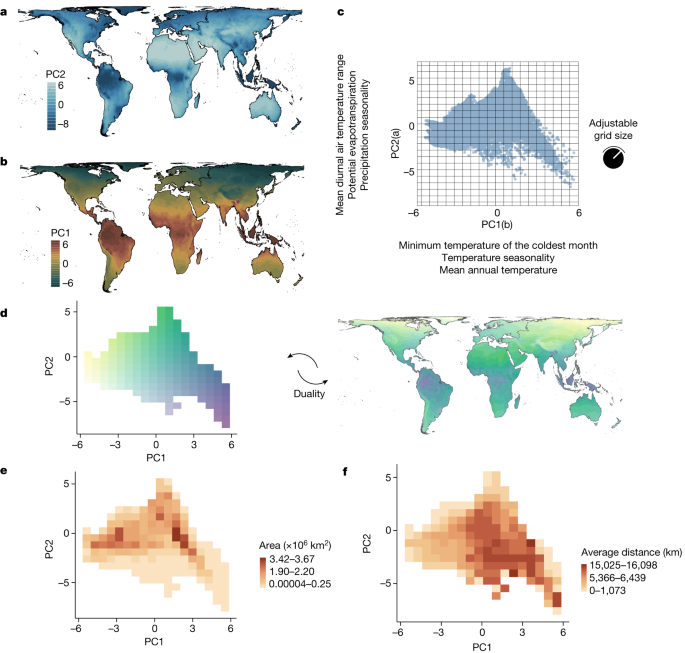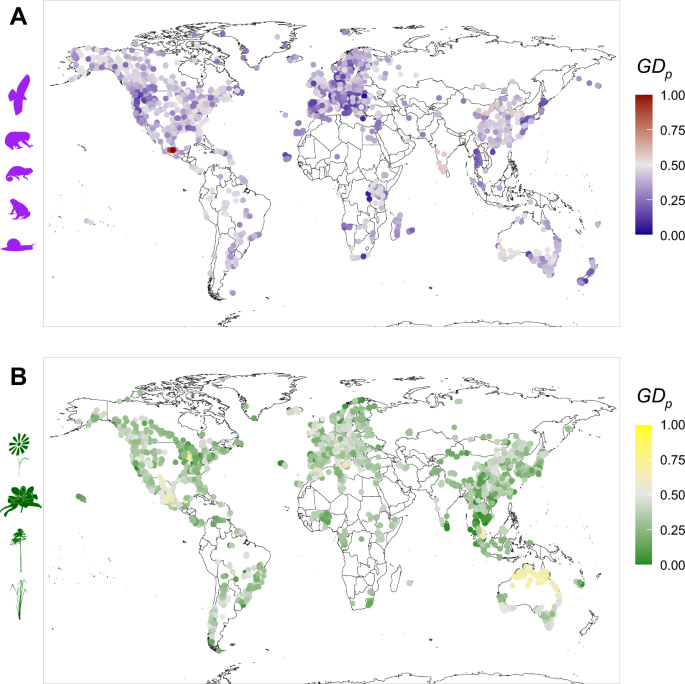
Biodiversity, defined as the variety and variability of life on Earth, is critically shaped by geographic factors. Geography influences not only climate and habitat variety but also species distribution patterns across different environments. This report synthesizes insights into how geographical elements impact biodiversity, drawing on recent research findings.
Geographic Variability and Biodiversity
The relationship between geography and climate plays a vital role in determining the diversity of life. Regions near the equator, characterized by stable, warm, and humid environments, tend to support diverse ecosystems, leading to higher species richness compared to cooler or drier regions. This phenomenon is evident in the tropics, where climatic conditions promote a great variety of plant and animal life that is often not found elsewhere[2][3][6].
Geographic barriers, such as mountains and oceans, also significantly contribute to biodiversity by preventing gene flow and fostering unique species evolution. For example, the Himalayas create diverse ecological conditions leading to varied life forms at different elevations[2]. Similarly, isolated islands and unique geographic formations are often biodiversity hotspots, housing large numbers of endemic species[3].
Climate's Role in Species Distribution
Climate is a primary driver of biodiversity, with its variability across geographic landscapes leading to different ecological niches. For instance, the patterns of species richness observed globally align strongly with temperature and water availability, which are influenced by geographical factors[1]. The concept of 'climate space' offers a fresh perspective on biodiversity, emphasizing the need to consider how the geography of climate (area and isolation) affects species richness beyond mere climatic conditions[3][6].
A study revealed that greater species richness in warmer, humid regions is not solely due to climatic conditions themselves but also to how these climates are distributed across the Earth's surface. This approach highlights the importance of considering both the extent of a given climatic condition (climate area) and its isolation, which can lead to increased opportunities for speciation and reduced extinction rates[1][5].
Historical and Contemporary Influences
The evolution of biodiversity is also shaped by historical geographic changes. Over time, climate change, continental drift, and the emergence of geographic barriers alter the distribution and isolation of species. These historical processes mean that species must adapt to their environments, impacting their evolutionary trajectories[7]. For example, during glacial periods, shifts in climatic conditions led to population bottlenecks that have long-lasting effects on genetic diversity within species[7].
In contrast, current geographic configurations significantly influence the dynamics of biodiversity. Urbanization, agriculture, and deforestation often occur in ecologically favorable areas, leading to habitat loss and fragmentation, which exacerbate the decline of biodiversity[2][5]. Understanding how geography interacts with these contemporary changes is essential for conservation efforts aimed at preserving biodiversity.
The Area-Isolation Hypothesis
Recent research suggests modifying the Area Hypothesis—which explains patterns of species diversity based on geographic area—into an Area-Isolation Hypothesis. This refined understanding takes into account the geographical distribution and isolation of similar climatic zones[1][5]. For instance, while tropical climates cover extensive areas, they are also highly fragmented and isolated, promoting speciation through increased ecological differentiation[1][3].

Findings indicate that regions with larger and more isolated climates tend to exhibit not only increased species richness but also greater turnover rates in community composition. This suggests that independent pools of species evolve due to dispersal limitations and historical fluctuations in climate geography[5][6].
Biodiversity Conservation in the Face of Climate Change
Understanding the interplay between geography and biodiversity is crucial for effective conservation strategies. As anthropogenic climate changes alter geographic distributions and climate dynamics, it becomes imperative to adapt conservation frameworks that consider the geography of climate. This includes recognizing how climate area and isolation contribute to species richness and developing targeted conservation measures for areas at risk of fragmentation and habitat loss[2][3].

The urgent need to account for geographic variations in climate impacts signifies that conservation efforts must be nuanced and context-driven, taking into consideration the distinct ecological and evolutionary processes shaped by geographic features[1][4]. By integrating geographical and climatic understandings, conservation strategies can be more effective in mitigating biodiversity loss in the face of ongoing climate change.
In summary, the interplay between geography and biodiversity is a complex narrative shaped by environmental conditions, historical changes, and contemporary challenges. Recognizing and understanding these intricacies is crucial as we strive to preserve the rich tapestry of life on our planet amidst the changing global landscape.
Get more accurate answers with Super Pandi, upload files, personalized discovery feed, save searches and contribute to the PandiPedia.
Let's look at alternatives:
- Modify the query.
- Start a new thread.
- Remove sources (if manually added).